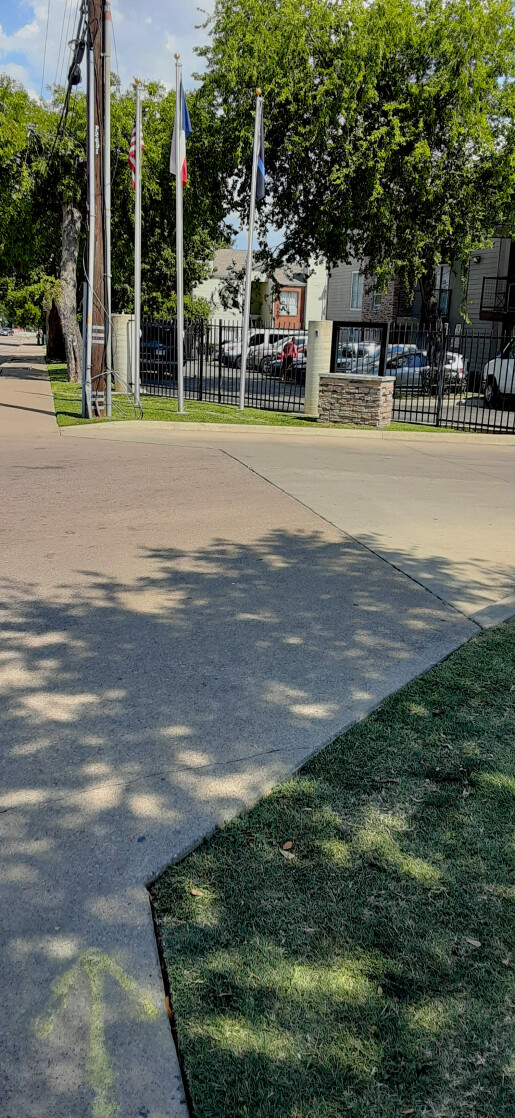The Yellow Arrow

The Camino Francese that runs across Spain from the Pyrenees to Santiago de Compostela is a hard path to get lost on. The European Union in 1987 designated it as a European Cultural Itinerary, and one sees many distinctive blue EU signs marking the walking trail as well as cautioning motorists where the trail parallels or crosses a highway. The various autonomous regions of Spain also have their distinctive markers to guide pilgrims.
But the near-ubiquitous trail marker is the flecha amarilla, the yellow arrow. One sees these yellow arrows everywhere: on the sidewalk, on the corner of a building, on a road sign, on a tree trunk. They are the most common of the signs and the most spontaneous, in that it seems the collective minds of millions of pilgrims have noted the places where someone might be confused or lost. Often just when I started to worry that I might have missed a turn, there would be the flecha amarilla.
It turns out these arrows have a history. The guidebook says they were the idea of Don Elias Valiña Sampedro (1929-1989), an important figure in the modern restoration of the Camino. He was the parish priest at Iglesia de Santa Maria Real in O’Cebreiro in Galicia, a church that dates back to the 9th century and (again from the guidebook) is “the oldest extant church associated directly with the pilgrim way.” I visited the church one foggy morning in early May: candles were burning, seemingly from overnight; Bibles in many languages were on a wall for those who wanted to sit and read; cushions were on the floor before various places of meditation. It was a well-used, inviting place for prayer and understanding. On one side was a memorial to this priest. The guidebook again: “it was largely as a result of his efforts that we walk the route today.”
---
Recently I had time to take a long walk in Dallas, the first walk of more than 10 miles since I returned from the Camino. I was heading north on Holly Hill, a street that angles north between Greenville and the Sopac Trail. And there on the sidewalk was the flecha amarilla. I was missing the Camino, and yet I was on the Camino.
Bilbo Baggins wrote a truth when he began a poem: “The road goes ever on and on.”
---
Out & About. Sunday, October 9, at 5 p.m., I am to give the fall theology lecture: “Theology of Walking,” in the Ascension Chapel of Church of the Incarnation in Dallas. The following Sunday, October 16, I will lead a seminar on Wise Blood by Flannery O’Connor. And both Sundays at 10:20 a.m. I get to lead the class on Augustine’s Confessions, covering Books IV and V. All these events are open to visitors.

